11 Best Foods For Gaining Weight Without Compromising Your Health
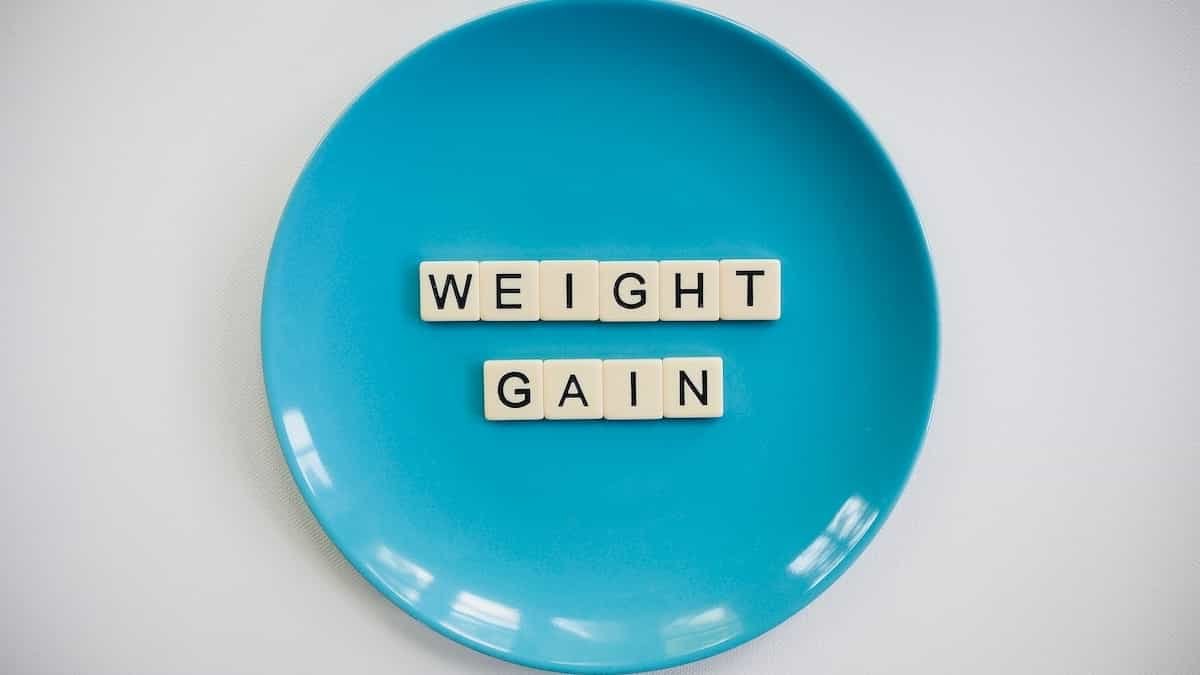
Are you tired of being to skinny? Do you feel that how much you try eating you still can’t reach your desired weight goal? Do you want to fill out your clothes and gain some weight?
Well, it’s time to say goodbye to the endless bowls of pasta and calorie-dense junk food. Don’t let the fear of gaining unhealthy weight keep you from achieving your goals because.. the solution is simple:
Eat foods that are both healthy and calorie-dense! That’s right, folks, you can have your cake and eat it too! So, in this article, we’ve rounded up the 11 best foods for gaining weight that are also damn healthy.
So, put on your eating pants and let’s dive in!
Best Foods For Gaining Weight
For those of you who are in a hurry, here’s a handy table with the best foods for gaining weight that we will be mentioning in this article.
Of course, we suggest you stick around to learn more about each foods health benefits and tips on how to incorporate each food in your diet.
| Food | Calories per 100g |
|---|---|
| Tahini | 595 kcal |
| Nuts (mixed) | 607 kcal |
| Almond Nut Butter | 614 kcal |
| Avocado | 160 kcal |
| Whole-grain bread | 265 kcal |
| Sweet Potato | 86 kcal |
| Quinoa | 120 kcal |
| Greek yogurt (full-fat) | 117 kcal |
| Salmon | 208 kcal |
| Chicken breast | 165 kcal |
| Olive Oil (1 tbsp) | 119 kcal |
1. Tahini

Tahini is a paste made from ground sesame seeds that has a nutty flavor and a smooth texture. It’s commonly used in Middle Eastern and Mediterranean cuisine and is a staple in dishes like hummus, baba ghanoush, and halva.
What’s great about tahini is that it’s not only delicious, but it’s also packed with healthy fats, protein, and vitamins.
The healthy fats found in tahini help to promote weight gain while also keeping your heart healthy.
Tahini is also a great source of calcium, iron, and magnesium, which can help to support bone health and improve digestion.
How to incorporate Tahini to your diet?
There are so many ways to incorporate tahini into your diet. You can add it to smoothies, use it as a salad dressing, or spread it on toast. One of my favorite ways to enjoy tahini is by making a simple tahini sauce.
All you need is tahini, lemon juice, garlic, and water. Just mix everything together until you get a smooth and creamy consistency, and you’re good to go.
This sauce is perfect for drizzling over roasted vegetables, dipping falafels in, or using as a sandwich spread.
What 100g of Tahini look like?
100 grams of tahini is approximately equal to 6 tablespoons or 1/2 cup. Baron’s Pure Tahini Sesame Paste sold on Amazon is a great choice by the way.
2. Mixed Nuts
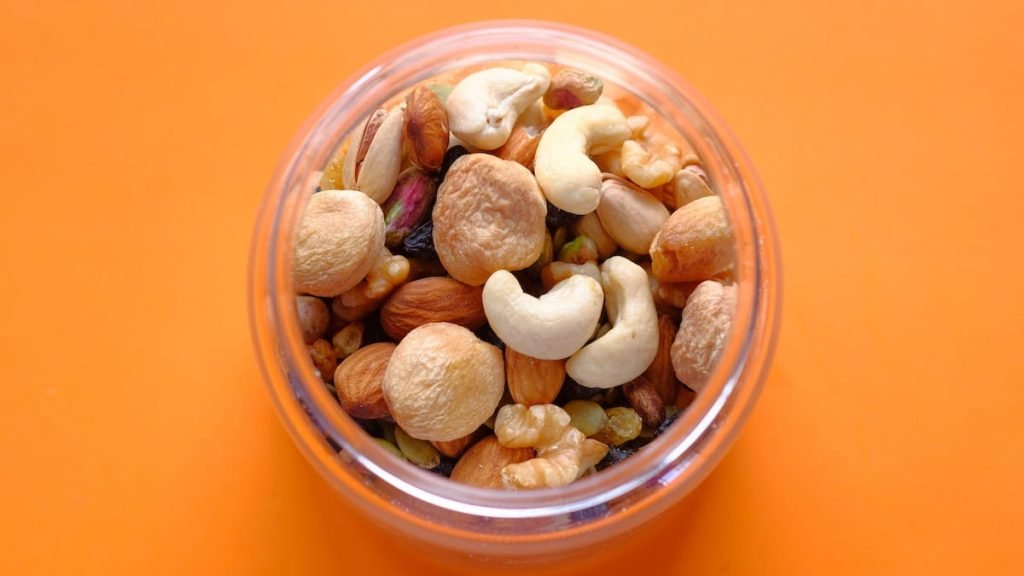
Nuts is a delicious snack that is not only tasty, but it’s also loaded with health benefits that can help you pack on those pounds in a healthy way.
First of all, mixed nuts are a great source of healthy fats. They contain monounsaturated and polyunsaturated fats, which are known to lower bad cholesterol levels and reduce the risk of heart disease. [1] [2]
These healthy fats are also very calorie-dense, so incorporating mixed nuts into your diet can help you reach your calorie goals for weight gain without having to eat huge meals.
In addition to healthy fats, mixed nuts are also rich in protein, fiber, vitamins, and minerals.
Protein is essential for building muscle mass, while fiber promotes healthy digestion and helps keep you feeling full.
Mixed nuts are also a great source of vitamins and minerals like vitamin E, magnesium, and zinc, all of which are crucial for overall health and wellbeing.
How to incorporate Nuts to your diet?
Easy. Just keep a bag of mixed nuts with you at all times, and munch on them whenever you need a quick and convenient source of calories.
You can also add mixed nuts to oatmeals, salads, greek yoghurt along with honey or carob honey.
What 100g of Nuts look like?
Each nut is approximately 1 gram. So, 100 grams is like holding 100 nuts.
3. Almond Nut Butter
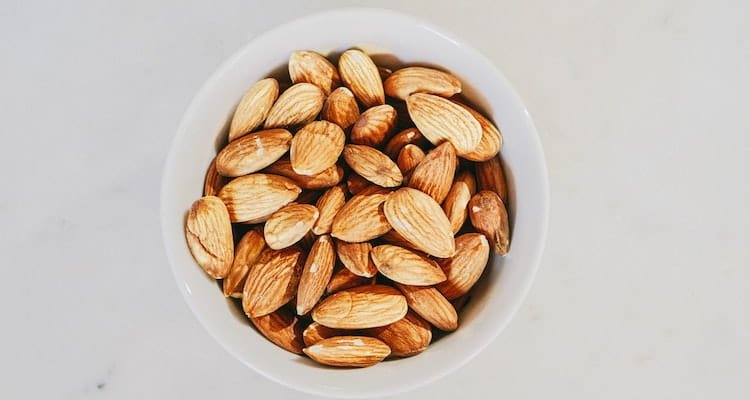
If you are trying to put on weight, one of your go-to snacks should be almond butter. Almond butter is creamy, delicious, and packed with healthy fats, protein, and nutrients that are going to help you achieve your weight gaining goals.
Almond butter is made by blending roasted almonds until they become a smooth and creamy spread. Some varieties may also include additional ingredients such as salt, sugar, or oil, but I (and you should too) prefer to stick with the natural, unsweetened kind.
Here’s a good option that’s 100% natural and without any added sugar.
One of the biggest health benefits of almond nut butter is its high concentration of monounsaturated fats, which can help improve heart health, reduce inflammation, and boost metabolism. It’s also an excellent source of protein, fiber, vitamin E, and other minerals like magnesium and potassium.
Of course, almond butter is just one of many nut butter options out there. Peanut butter is a popular choice that’s also high in protein and healthy fats, while cashew butter has a sweeter flavor and is rich in copper and iron. There’s even macadamia nut butter, which is incredibly decadent and has a uniquely buttery flavor.
How to incorporate Almond Butter to your diet?
Again, just like tahini, you can spread it on toast or crackers for a quick snack. You can also mix it into smoothies, oatmeal, or yogurt for added flavor and nutrition. And if you’re feeling adventurous, you can even use it as a base for homemade energy bars or protein balls.
What 100g of Almond butter look like?
100g of almond butter is roughly equivalent to a quarter cup or four tablespoons of the spread.
4. Avocado

Avocado is a unique fruit that is packed with healthy fats, fiber, and essential vitamins and minerals that make it a great addition to any diet.
Avocados are native to Central America and have been a staple in the diets of many cultures for thousands of years. They were brought to the United States in the 1800s and have since become a popular ingredient in many dishes. [3]
One of the health benefits of avocado is its high content of healthy fats, specifically monounsaturated and polyunsaturated fats. As we mentioned before, these types of fats have been shown to improve heart health and reduce inflammation.
Avocados also contain fiber, which can help you feel full and satisfied after eating, and essential vitamins and minerals such as potassium, vitamin C, and vitamin K.
How to add Avocado to your diet?
To add avocado into your diet, you can start by simply adding it to your favorite meals. You can slice it up and add it to salads or sandwiches, or mash it up and use it as a spread on toast or crackers.
Avocado can also be used as a healthy substitute for mayonnaise or sour cream in many recipes.
What 100g of Avocado look like?
100g of avocado is about half of a medium-sized avocado. One medium-sized avocado typically weighs around 200g, so 100g would be about a quarter of the fruit.
5. Whole-grain bread
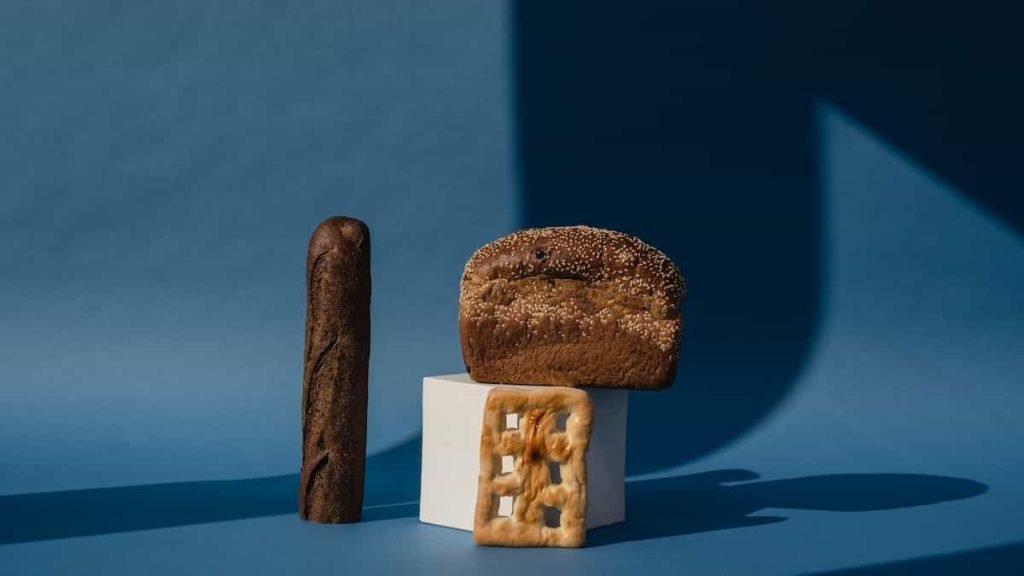
Whole grain bread is another food that can help you gain weight because it allows you to “wrap other foods together and prepare calorie dense and healthy snacks.
Unlike white bread, which is made from refined flour that has had the bran and germ removed, whole grain bread is made from whole grains that contain all parts of the grain, including the bran and germ. [4]
This means that whole grain bread is a much more nutritious choice, as it is higher in fiber, vitamins, and minerals.
In addition to being more nutritious, whole grain bread also has a lower glycemic index than white bread, which means it won’t cause a rapid spike in blood sugar levels. [5]
This can help keep you feeling full and satisfied for longer, which can be helpful for gaining weight in a healthy way.
How to add whole grain bread to your diet?
To incorporate whole grain bread into your diet, you could start by swapping out white bread for whole grain bread in sandwiches or toast.
You could also try making a sandwich with 100g of avocado, 100g of tahini or peanut butter, some tomato and lettuce and 100g of chicken breasts. You are packing on average 1500 calories with a single snack.
What 100g of Whole grain bread look like?
If I’m curious about what 100g of whole grain bread looks like, it’s roughly equivalent to two slices of bread. So, if I make a sandwich with two slices of whole grain bread, I’ll be consuming about 100g.
6. Sweet Potato
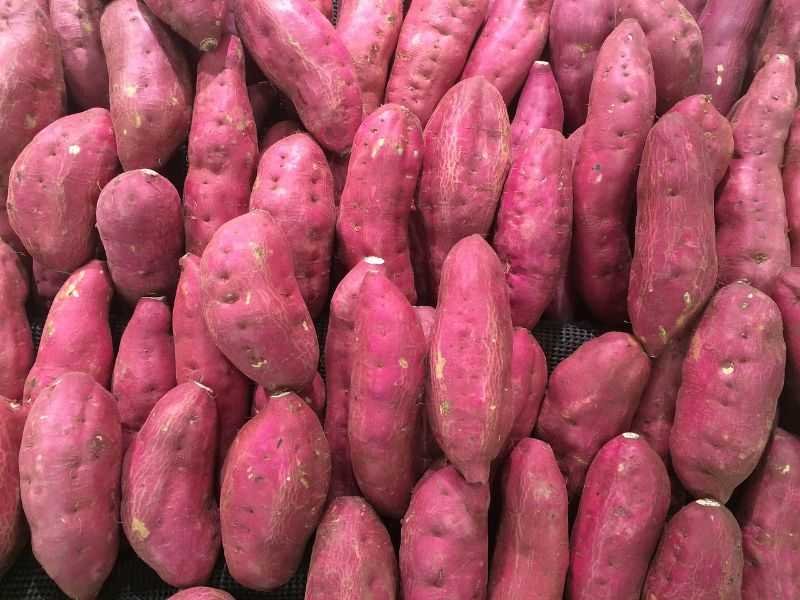
As someone who is trying to put on weight without compromising your health, sweet potatoes should become a staple in your diet.
Sweet potatoes originated in South America over 5,000 years ago and have since spread throughout the world. [6]
Unlike normal potatoes, sweet potatoes are known for their vibrant orange (or purple) color and sweeter taste.
One of the main health benefits of sweet potatoes is that they are a great source of complex carbohydrates. [7]
These carbohydrates provide sustained energy throughout the day, which is especially important when trying to gain weight. [8]
Additionally, sweet potatoes are packed with vitamins and minerals such as vitamin A, vitamin C, potassium, and fiber.
How to add sweet potatoes into your diet?
There are many ways to incorporate sweet potatoes into your diet. One of my favorite ways to enjoy them is by baking them in the oven and then adding a little bit of butter and cinnamon on top.
You can also mash them up and use them as a substitute for regular mashed potatoes.
Another great way to eat sweet potatoes is by cutting them into fries and baking them in the oven until crispy. Dip them in tahini or avocado spreads and pack more gains.
What 100g of Sweet potatoes look like?
100g of sweet potatoes looks like, it’s about the size of a small sweet potato or half a medium-sized sweet potato. That might not seem like a lot, but sweet potatoes are quite filling and can be a great addition to any meal.
7. Quinoa
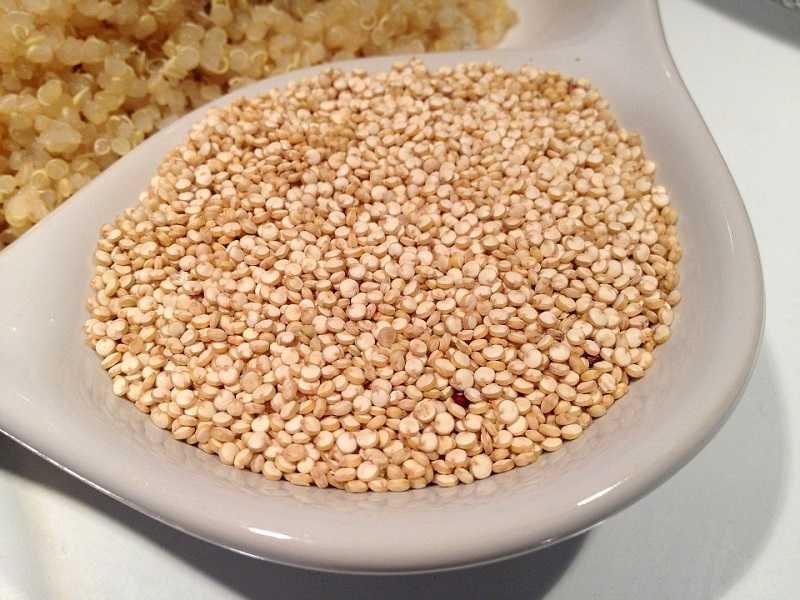
Have you tried incorporating quinoa into your diet? Quinoa is a superfood that is known for its high nutrient content and is perfect for those who want to gain weight without sacrificing their health.
Quinoa originated in the Andean region of South America and has been consumed for thousands of years. [9]
It is often referred to as a grain, but in reality, it is a seed that is closely related to spinach and beets. [10]
Quinoa is different from other grains like bulgur because it is a complete protein, meaning that it contains all nine essential amino acids that our bodies cannot produce on their own. This makes it an excellent choice for vegetarians and vegans who may struggle to get enough protein in their diets.
Quinoa is also high in fiber, which can help regulate digestion and keep you feeling full for longer periods of time. Additionally, it is rich in vitamins and minerals such as magnesium, potassium, and iron, which are essential for maintaining a healthy body.
How to incorporate Quinoa to your diet?
One of the best things about quinoa is how versatile it is. You can use it in a variety of dishes, from salads to stir-fries to breakfast bowls.
Try adding it to your morning smoothie or mixing it into your favorite soup or chili recipe. You can also use it as a base for a delicious grain bowl by topping it with veggies, protein, and your favorite dressing. (pairs fantastic with tahini).
What 100g of Quinoa look like?
100g of quinoa may not sound like a lot, but it actually expands quite a bit when cooked. One cup of cooked quinoa is equivalent to about 185g, so keep that in mind when adding it to your recipes.
8. Greek Yogurt
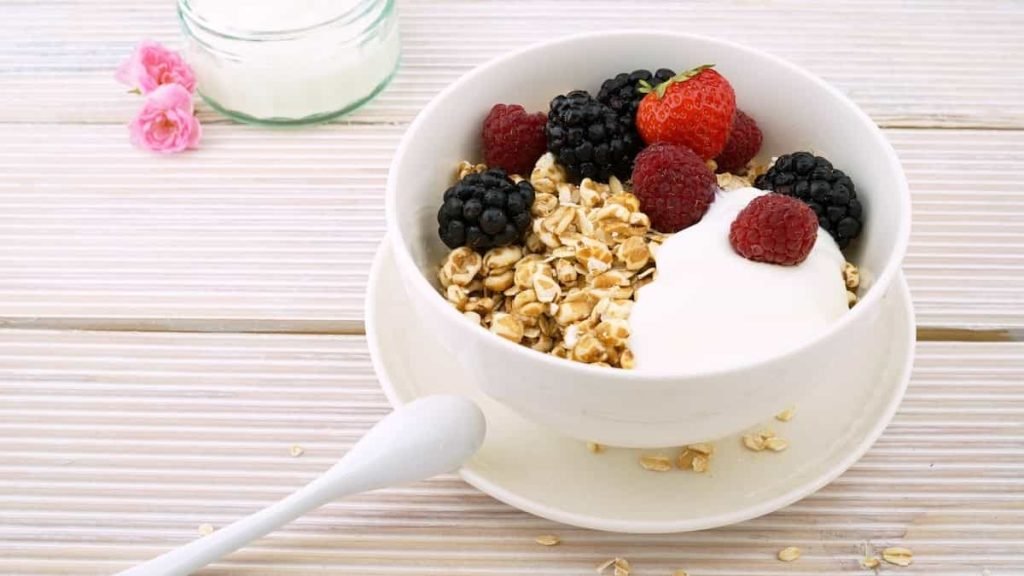
If you’re looking to put on weight while still maintaining a healthy diet, Greek yogurt could be a great addition to your daily meals.
Unlike other yogurts, Greek yogurt is strained to remove the whey, resulting in a thicker and creamier texture. [11]
This process also removes a lot of the lactose and sugar, making it a lower carbohydrate option. Additionally, Greek yogurt is higher in protein, which is essential for building and repairing muscle.
When you go to but Greek yogurt, it’s important to check the label to ensure it doesn’t contain any added sugars or artificial flavors.
Opt for plain, unsweetened Greek yogurt and add your own toppings, such as fresh fruit or honey and mixed nuts. An excellent Greek yogurt choice could be this one from Amazon.
Greek yogurt has numerous health benefits as well. Frist of all, it’s an excellent source of calcium, which is essential for bone health. It also contains probiotics, which promote good gut health and can boost your immune system.
Greek yogurt is also a great source of B vitamins, which are important for energy production. [12]
How to add Greek Yogurt to your diet
Incorporating Greek yogurt into your diet is easy. You can enjoy it as a snack on its own or add it to smoothies for a creamy texture.
It also makes a great substitute for sour cream in recipes or can be used as a base for dips and sauces.
Try mixing it with fresh herbs and garlic for a flavorful dip or spreading it on toast with avocado for a healthy breakfast option.
You can also mix it with Quinoa, nuts, honey and berries.
What 100g of Greek Yogurt looks like
100g of Greek yogurt is about half a cup and contains around 10-15g of protein, depending on the brand and fat content. Of course, most greek yogurt brands have small 100g packages that you can stack home.
9. Salmon

Salmon is definitely a food you should consider adding to your diet if you want to pack some weight. Not only is it a great source of protein and healthy fats, but it’s also packed with a range of nutrients that can help keep your body healthy and functioning at its best.
One of the main reasons I included salmon in this list instead of for example red meat, is because salmon is a leaner source of protein.
Red meat is high in saturated fats while salmon is lower and higher in healthy omega-3 fatty acids. This means that you can still get the protein you need to build muscle and put on weight, without consuming excessive amounts of unhealthy fats.
Salmon is also an excellent source of vitamins and minerals, including vitamin D, vitamin B12, and selenium. These nutrients are essential for maintaining good overall health and can help support your immune system, bone health, and brain function.
How to add Salmon to your diet
If you’re looking to incorporate more salmon into your diet, there are plenty of ways to do so. You can grill or bake it for a simple, healthy meal, or add it to salads, soups, or stir-fries for extra protein and flavor.
Salmon is also a great choice for sandwiches or wraps, and can be added to omelets or scrambled eggs for a protein-packed breakfast.
What 100g of Salmon look like?
If you’re not sure how much salmon to eat, 100g of salmon is about the size of a deck of cards. This is a good portion size to aim for, but you can adjust based on your personal needs and goals.
10. Chicken breast
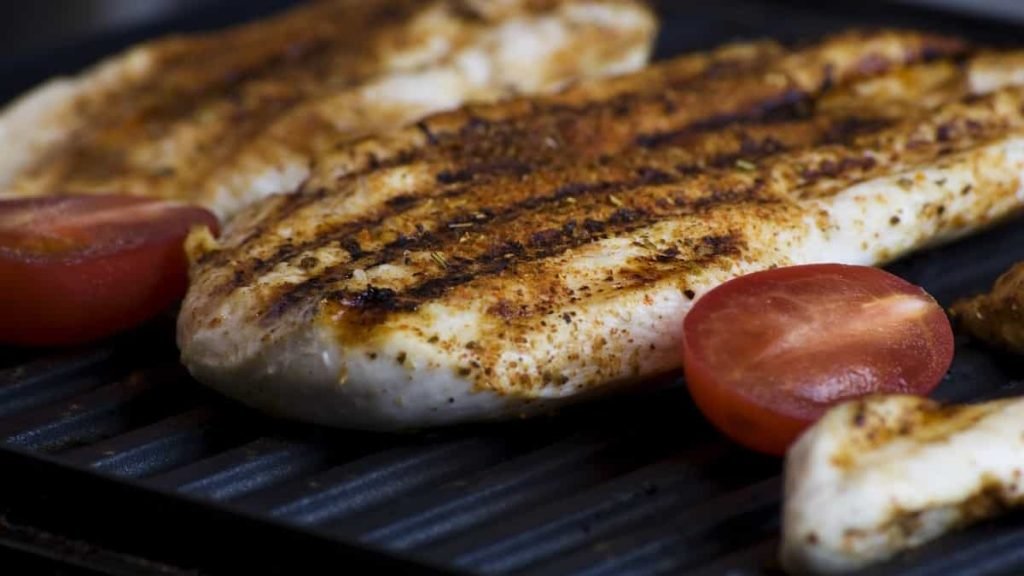
Chicken breast is another great option if you want to gain some weight and add lean protein to your diet. Unlike red meat, chicken breast is low in fat and calories per 100 grams. Plus, it’s packed with important nutrients like vitamin B6, which helps with brain function, and niacin, which is essential for healthy skin.
But wait.. I thought we’re talking about gaining weight through high calorie foods.. Yes, that’s true.. Bear with me for second..
Now, in addition to being a good source of protein and nutrients, chicken breast also has a number of health benefits. For example, it can help to lower your risk of heart disease and stroke, since it’s low in saturated fat and cholesterol.
Plus, the protein in chicken breast can help to build and repair muscle tissue, which is essential if you’re trying to put on weight.
How to add chicken breast to your diet?
There are plenty of ways to enjoy this tasty and versatile meat. You can grill it, bake it, or sauté it with some veggies for a quick and easy meal. You can also shred it and add it to salads or wraps for a healthy lunch option.
What 100g of Chicken breast looks like?
100 g of chicken breast is roughly the size of a deck of cards, so it’s a pretty easy measurement to remember. And here’s why I added it in this list. When you buy chicken breast you usually consumer 200 – 300g per meal, meaning that you are packing 330 to 500 calories per meal.
11. Olive Oil
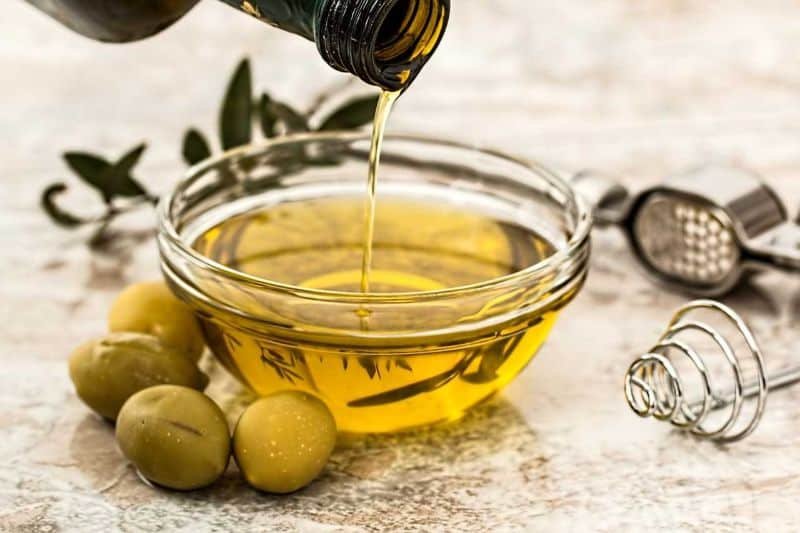
Ah, olive oil! What a delicious and versatile ingredient to incorporate into your diet. And the best part? It’s actually good for you! As someone who is trying to put on weight in a healthy way, olive oil is an excellent choice for you.
First off, let’s talk about the health benefits of olive oil. This “golden elixir” is packed with healthy monounsaturated and polyunsaturated fats that can help keep your heart healthy and reduce inflammation in your body.
It’s also a great source of vitamin E, an antioxidant that can help protect your cells from damage.
As single tablespoon for Olive oil has more than 100 calories. Usually in salads you can add as much as 3 – 4 tablespoons. At least this is what I do. This means that although I am earing my low calorie healthy salad, I am replenishing my calories with healthy olive oil.
How to add olive oil to your diet?
So, how can you incorporate olive oil into your diet? There are so many ways! One easy way is to use it as a cooking oil. Whether you’re sautéing vegetables, frying up some chicken, or roasting potatoes, olive oil can add flavor and healthy fats to your meal.
You can also use it as a salad dressing, either on its own or mixed with some vinegar or lemon juice. Or, drizzle it over some cooked pasta or rice for a tasty and nutritious addition to your meal.
If you’re looking for a more creative way to use olive oil, you can try making some homemade hummus or pesto with it. These dips are packed with flavor and nutrients and can be a great snack or addition to your meal.
Bottom Line
If you’re looking to gain weight in a healthy way, incorporating the right foods into your diet is crucial. The 11 foods listed in this article are all great options for packing on the pounds without sacrificing your health.
Whether you’re looking to add more healthy fats, protein, or carbs to your meals, these foods offer a variety of options to choose from.
Remember to also prioritize regular exercise and proper rest for optimal weight gain results.
With the right approach, you can achieve your weight gain goals while maintaining a healthy lifestyle.
Read Also
